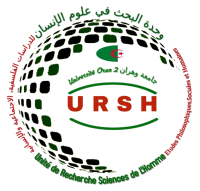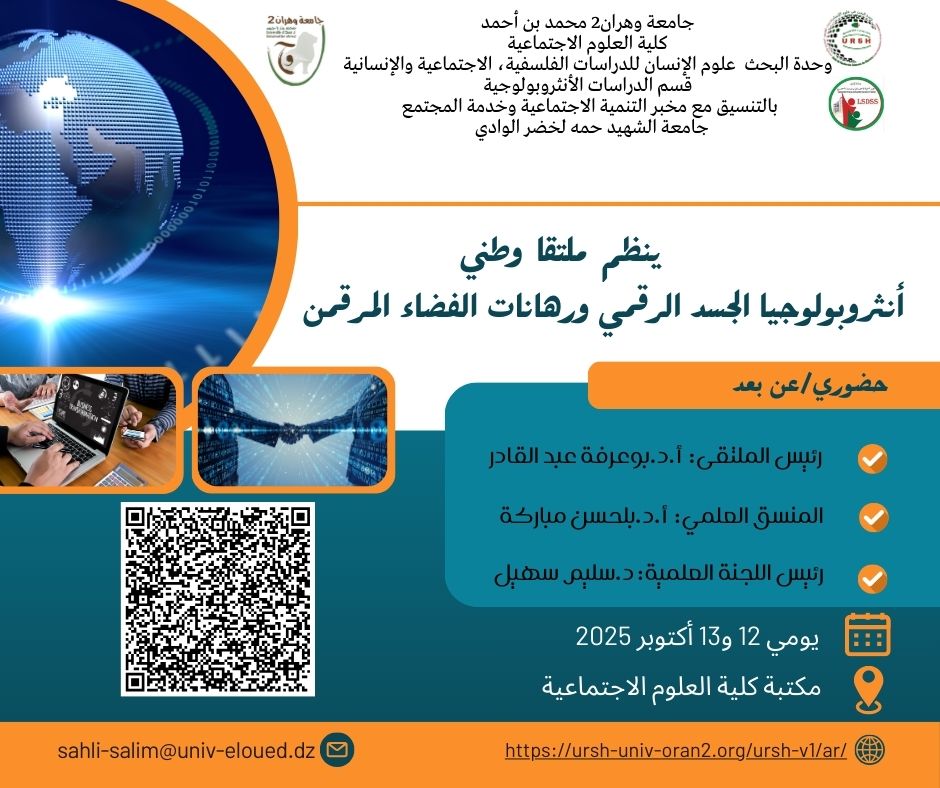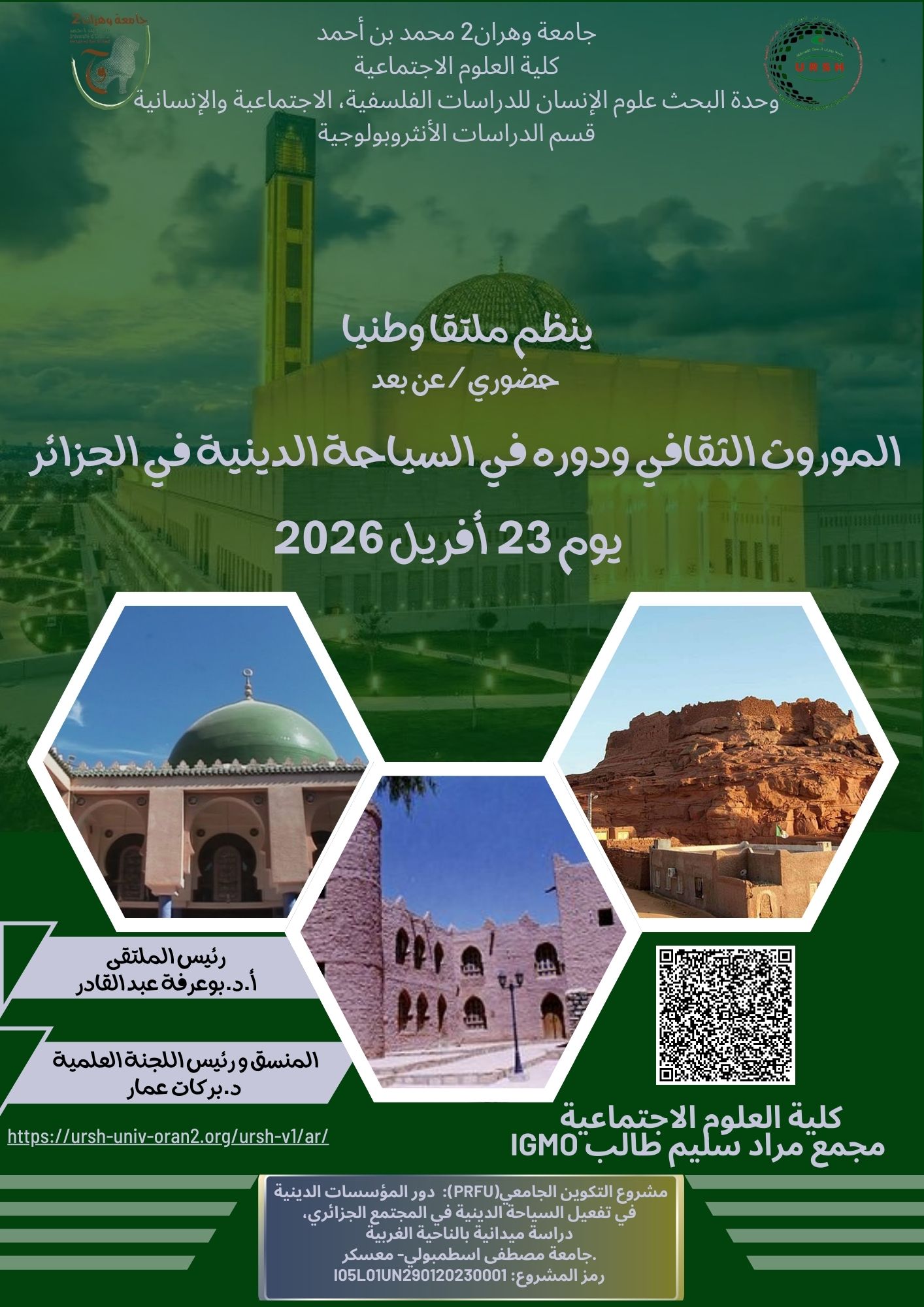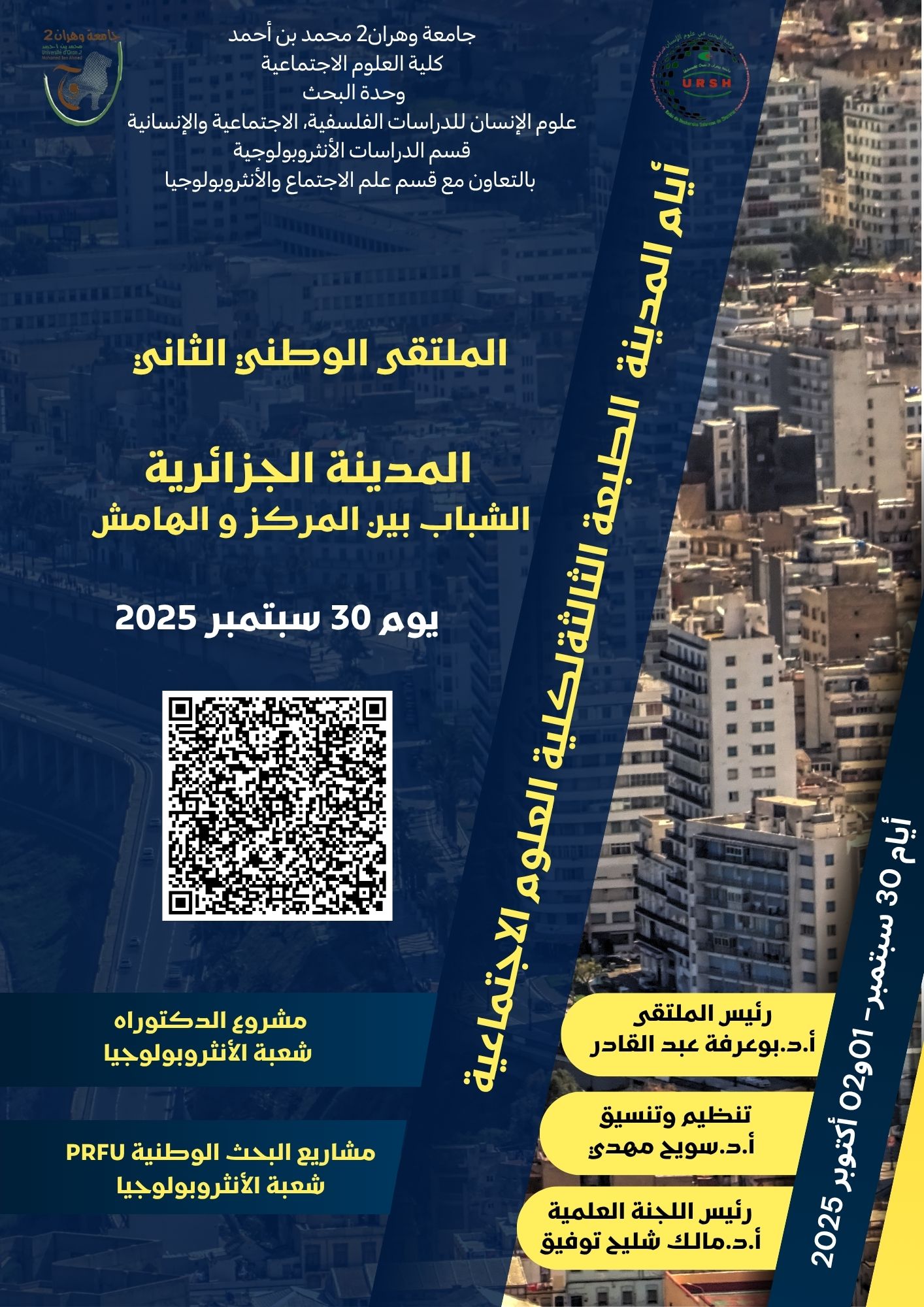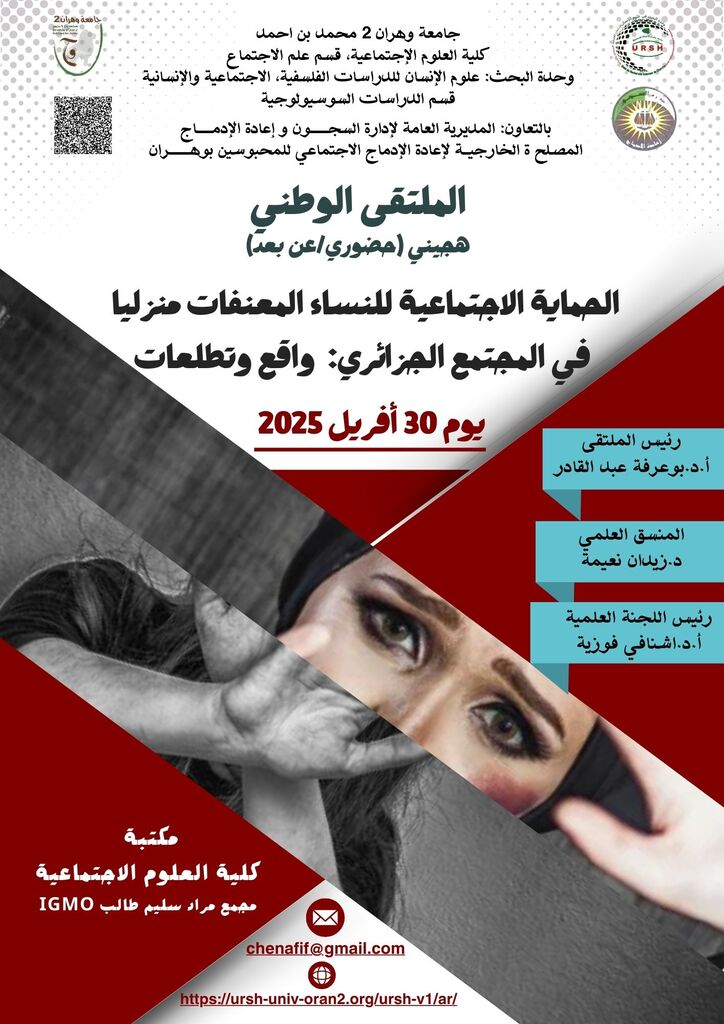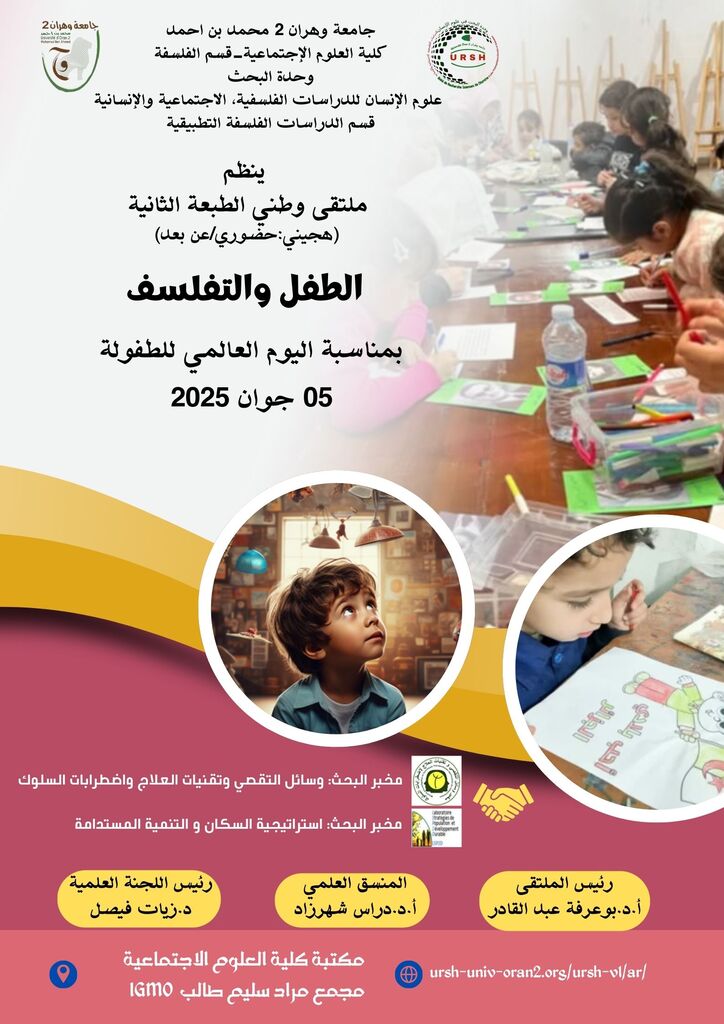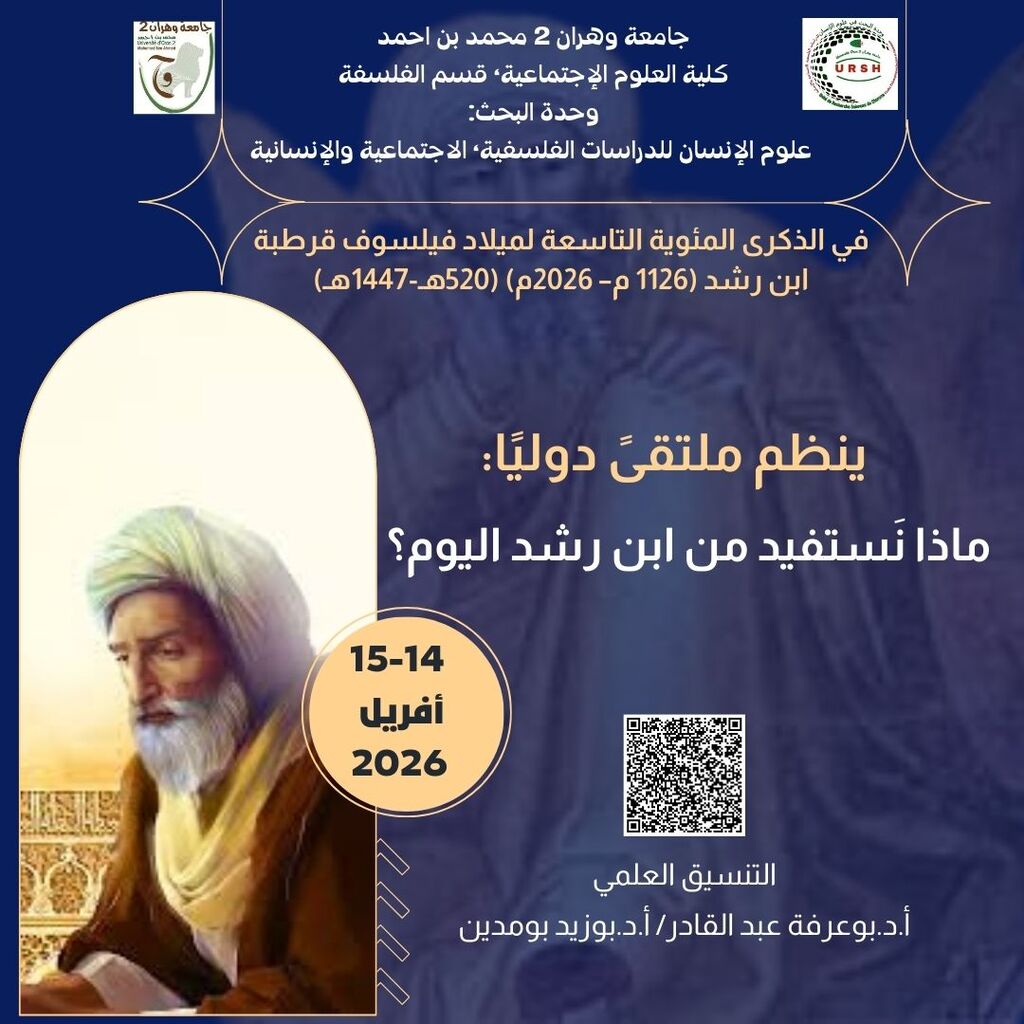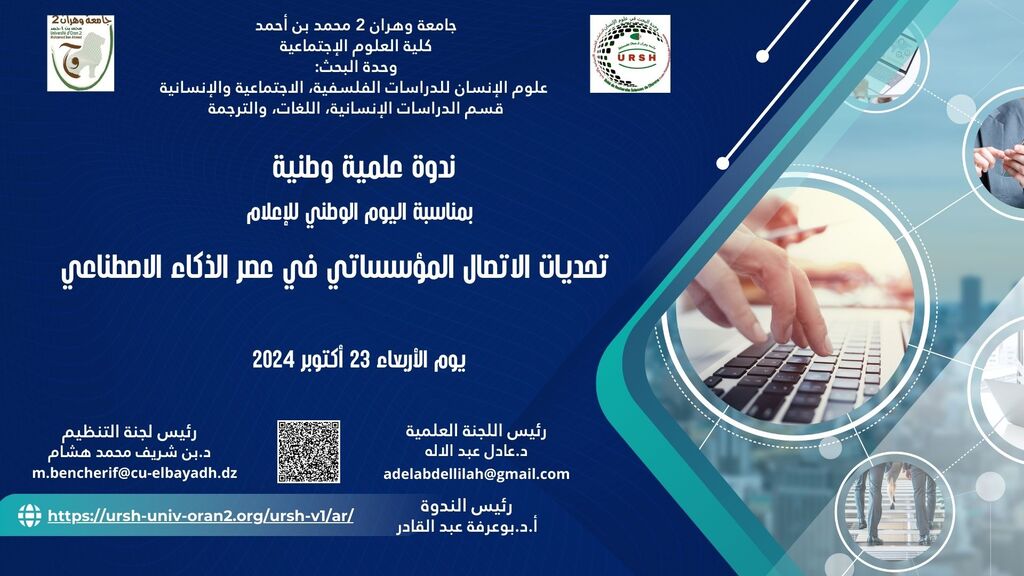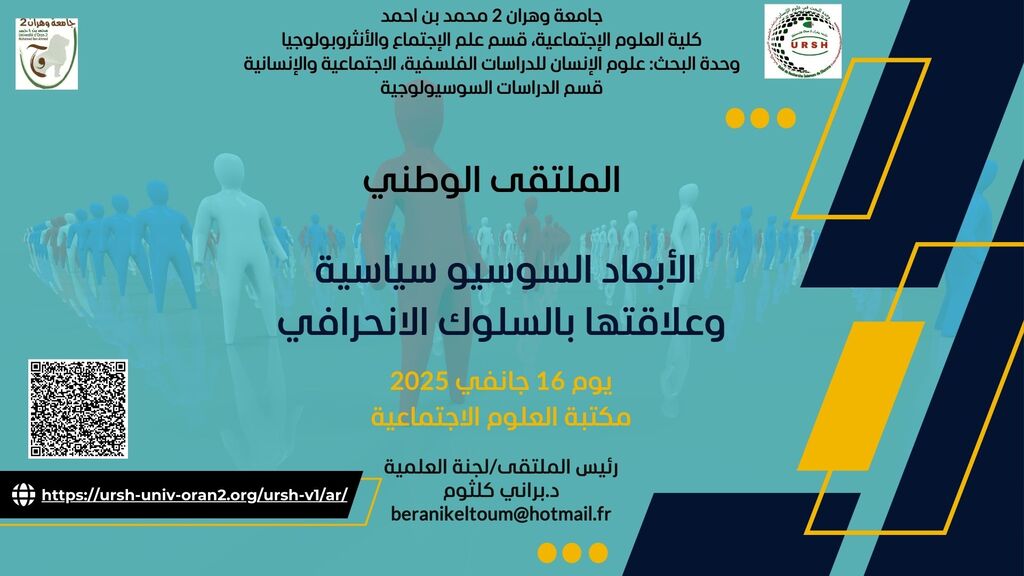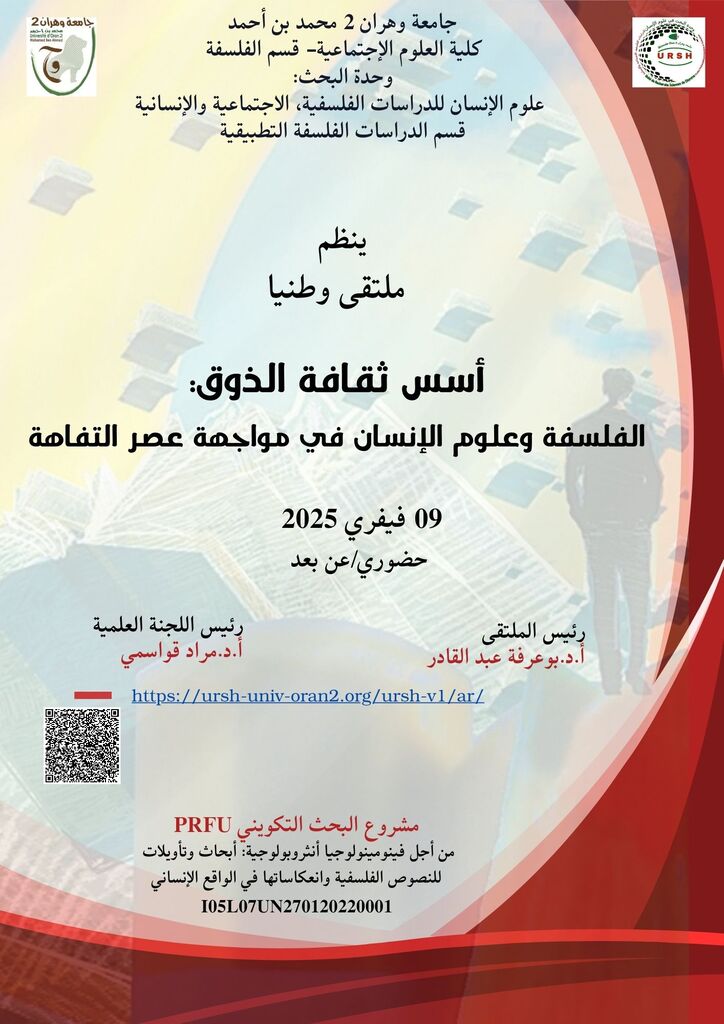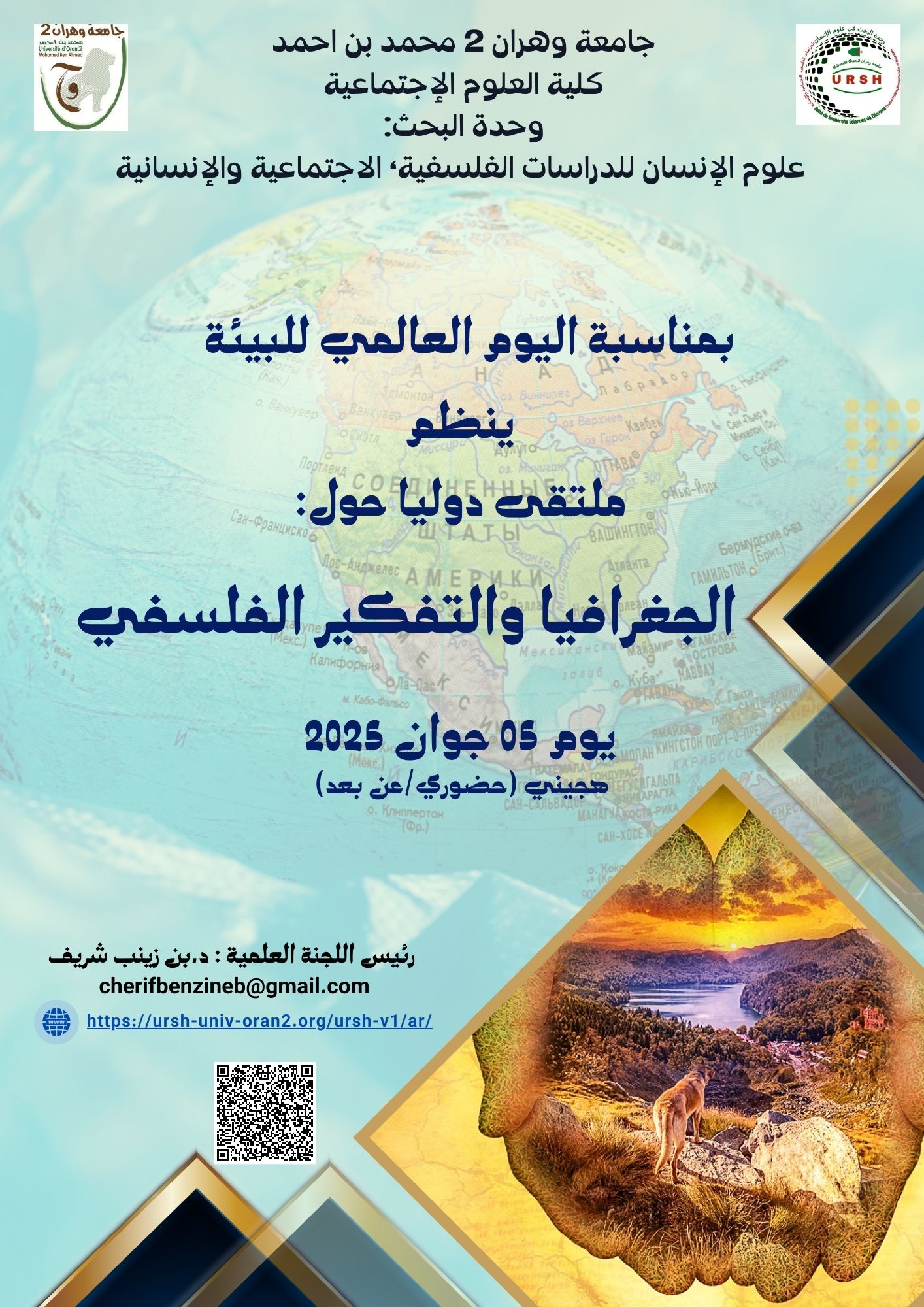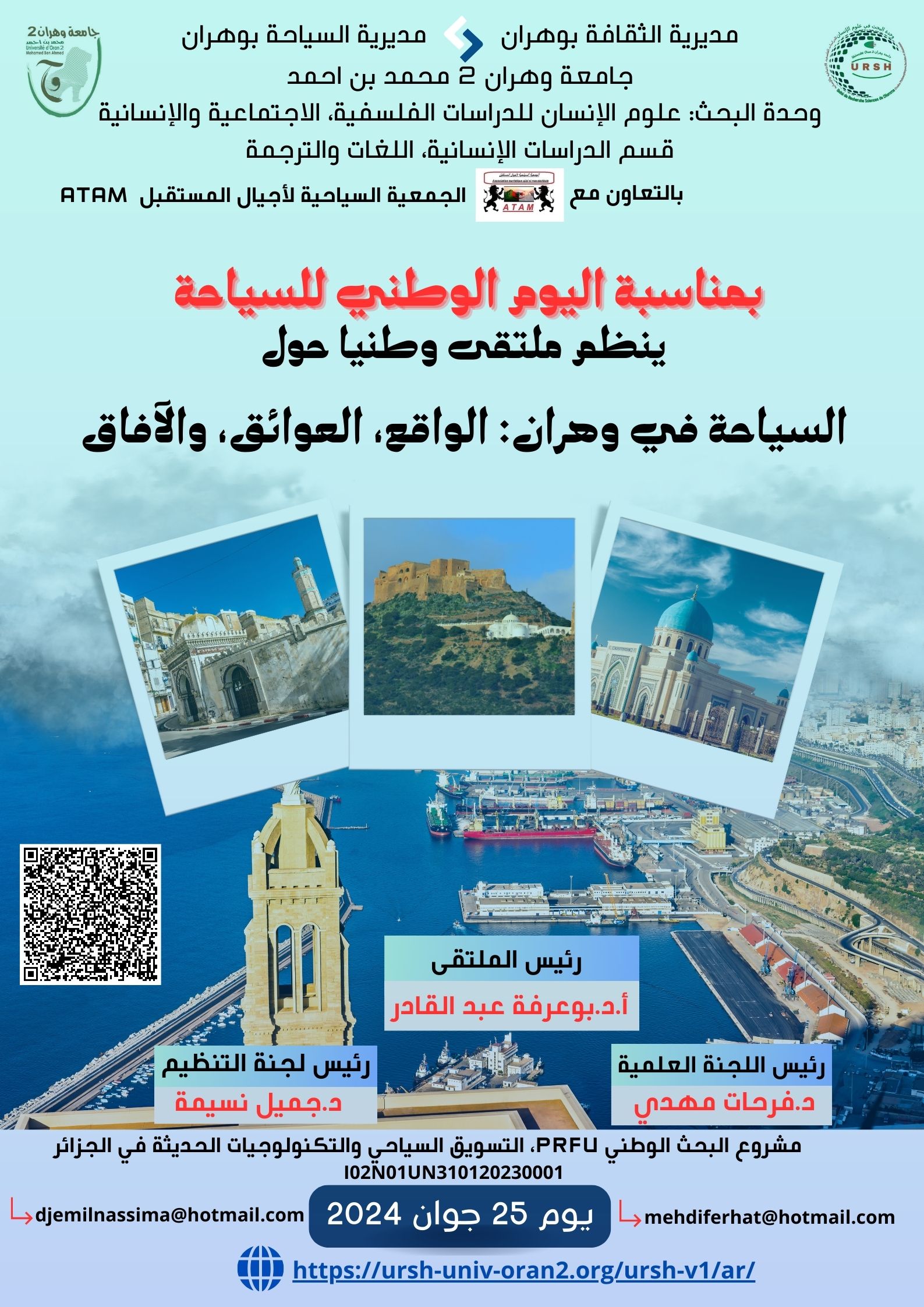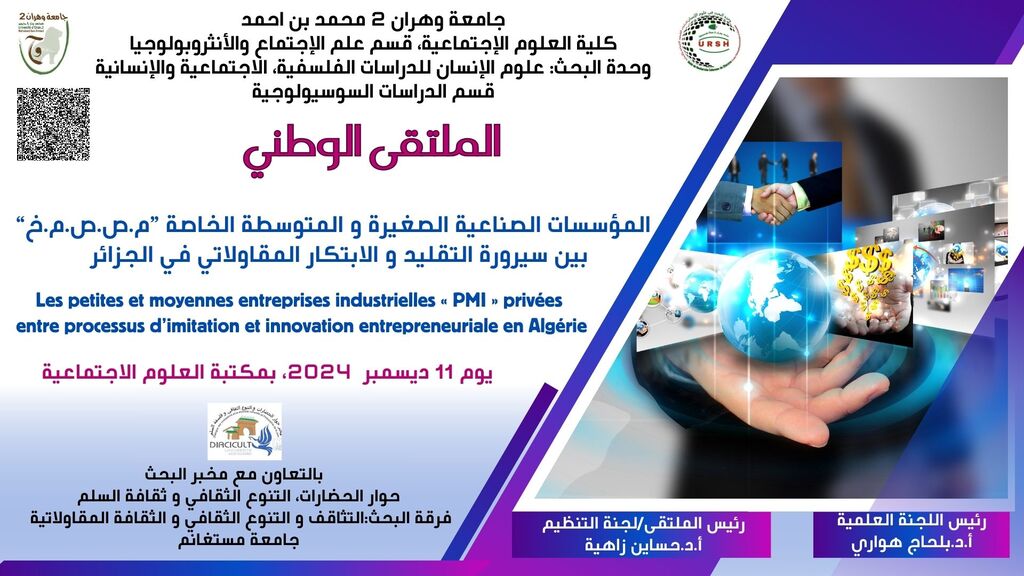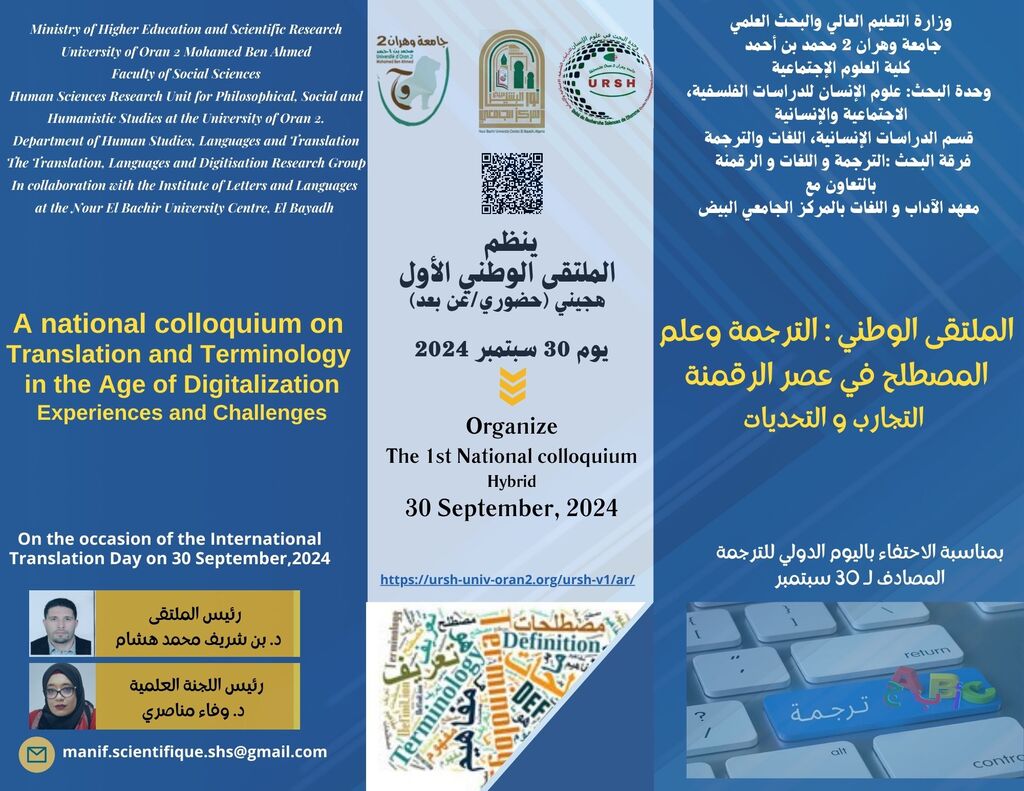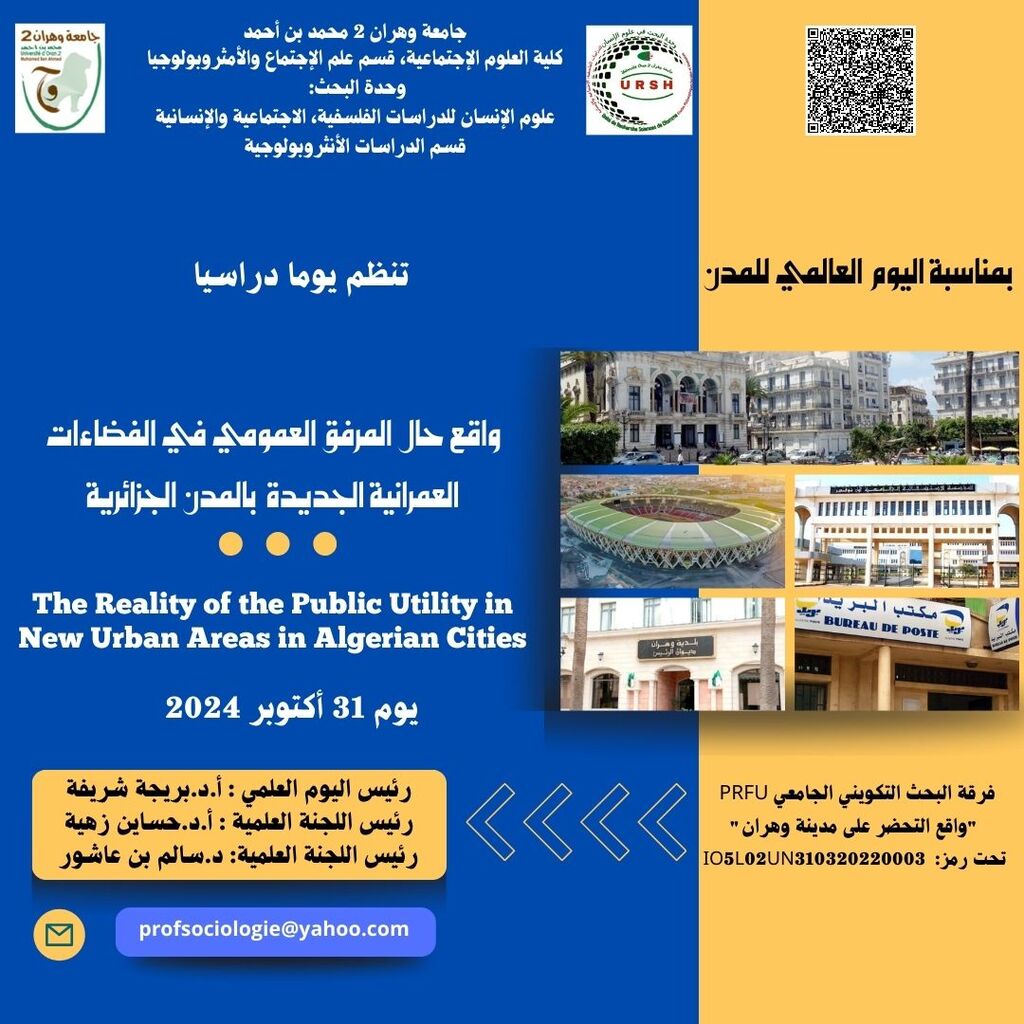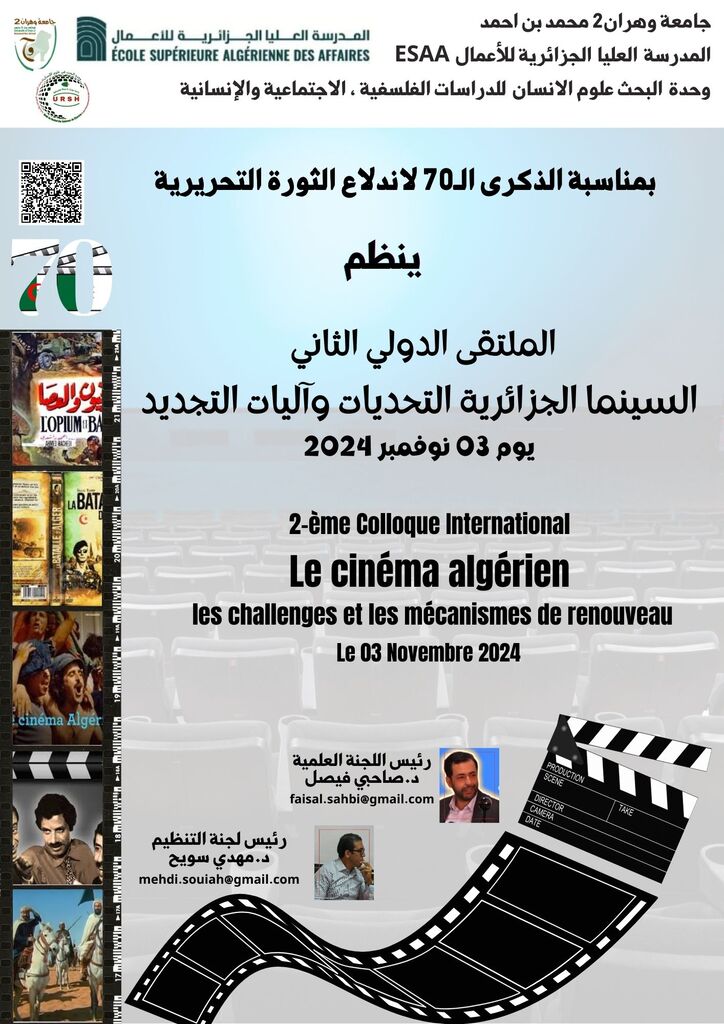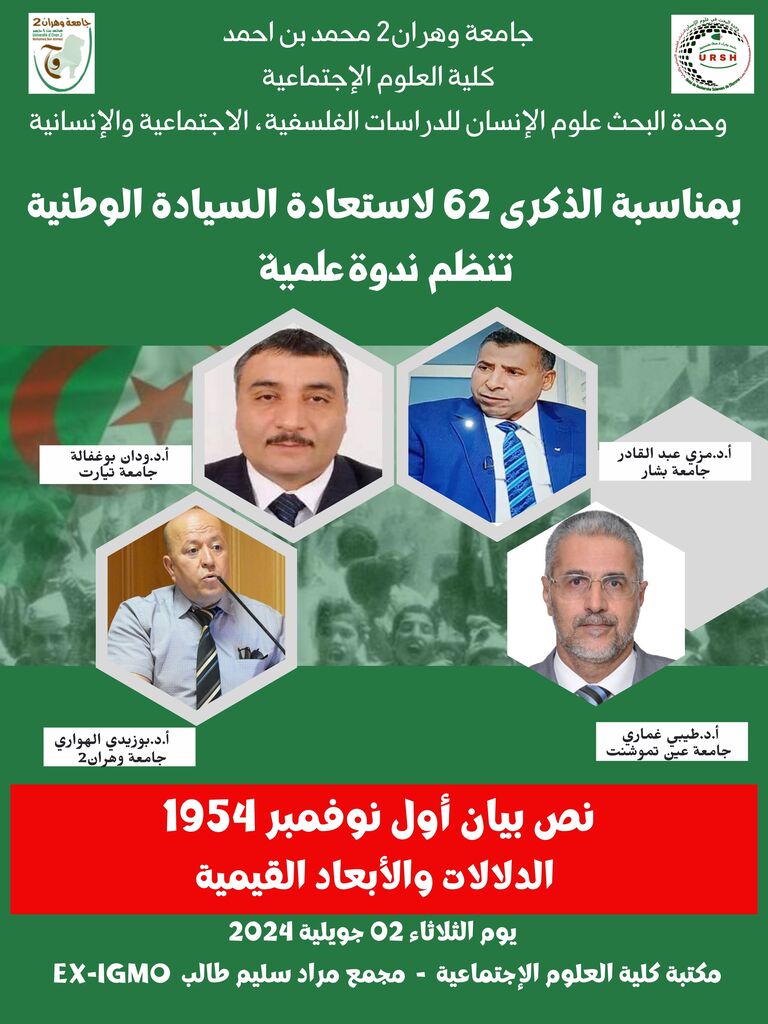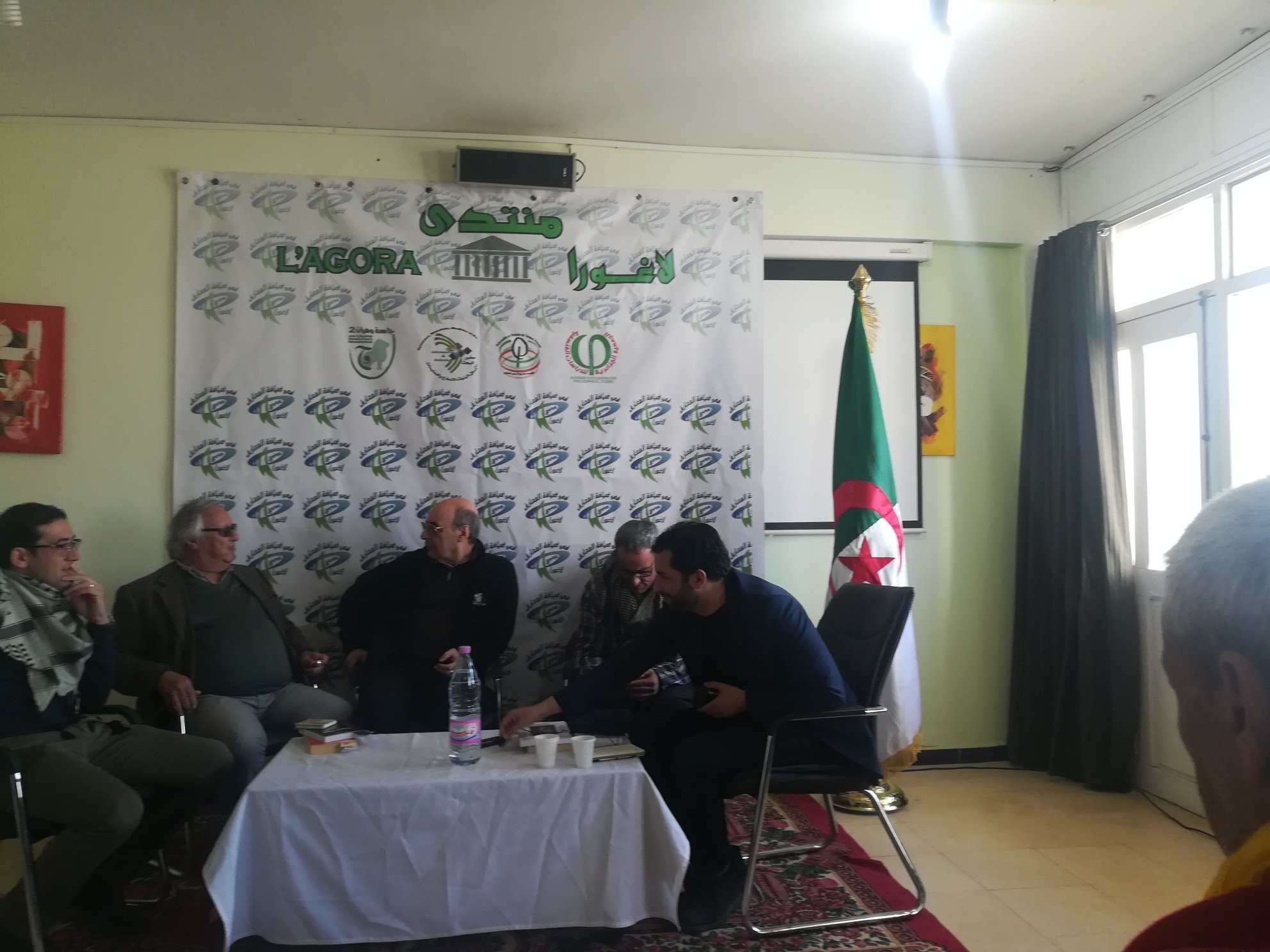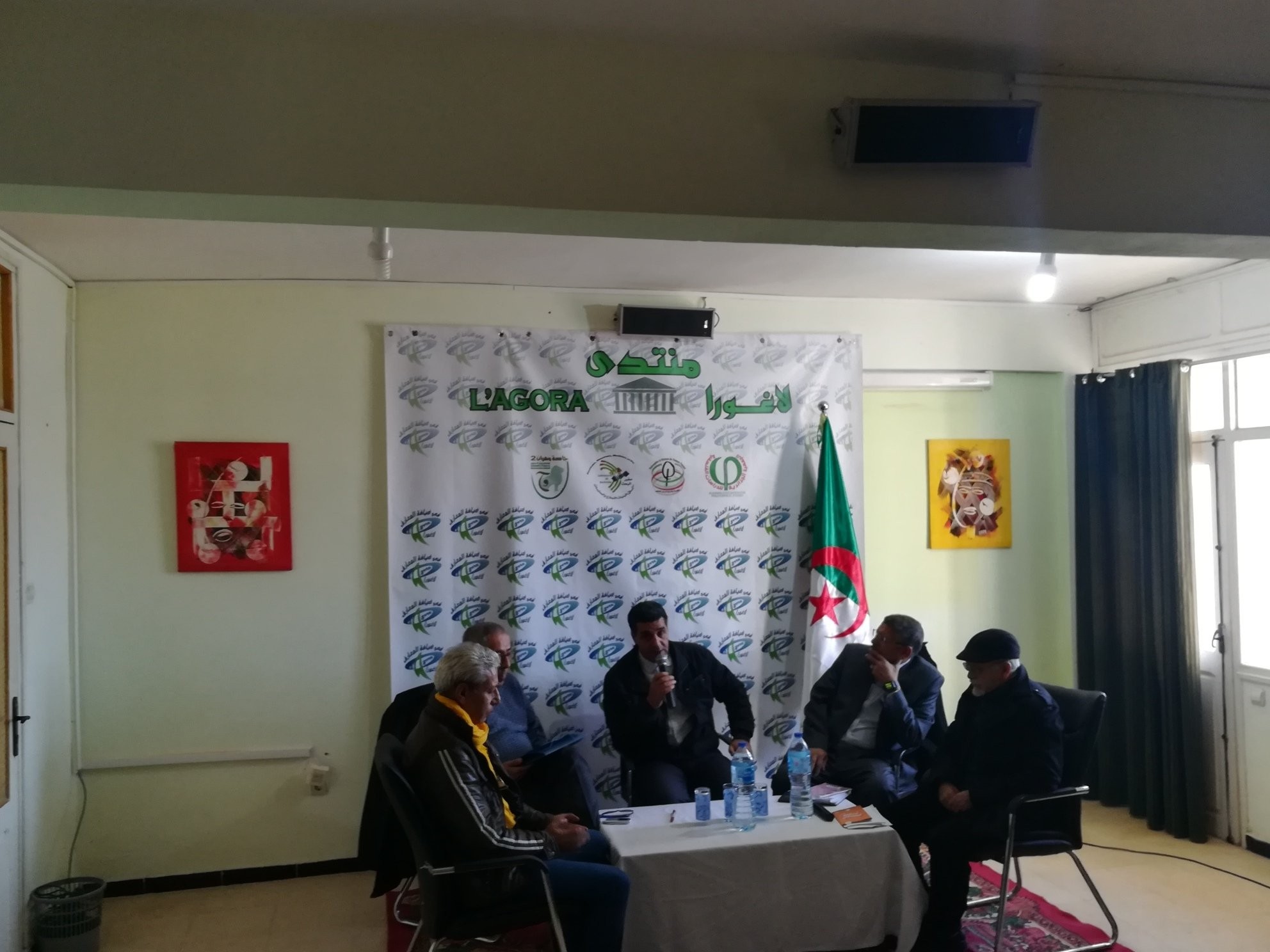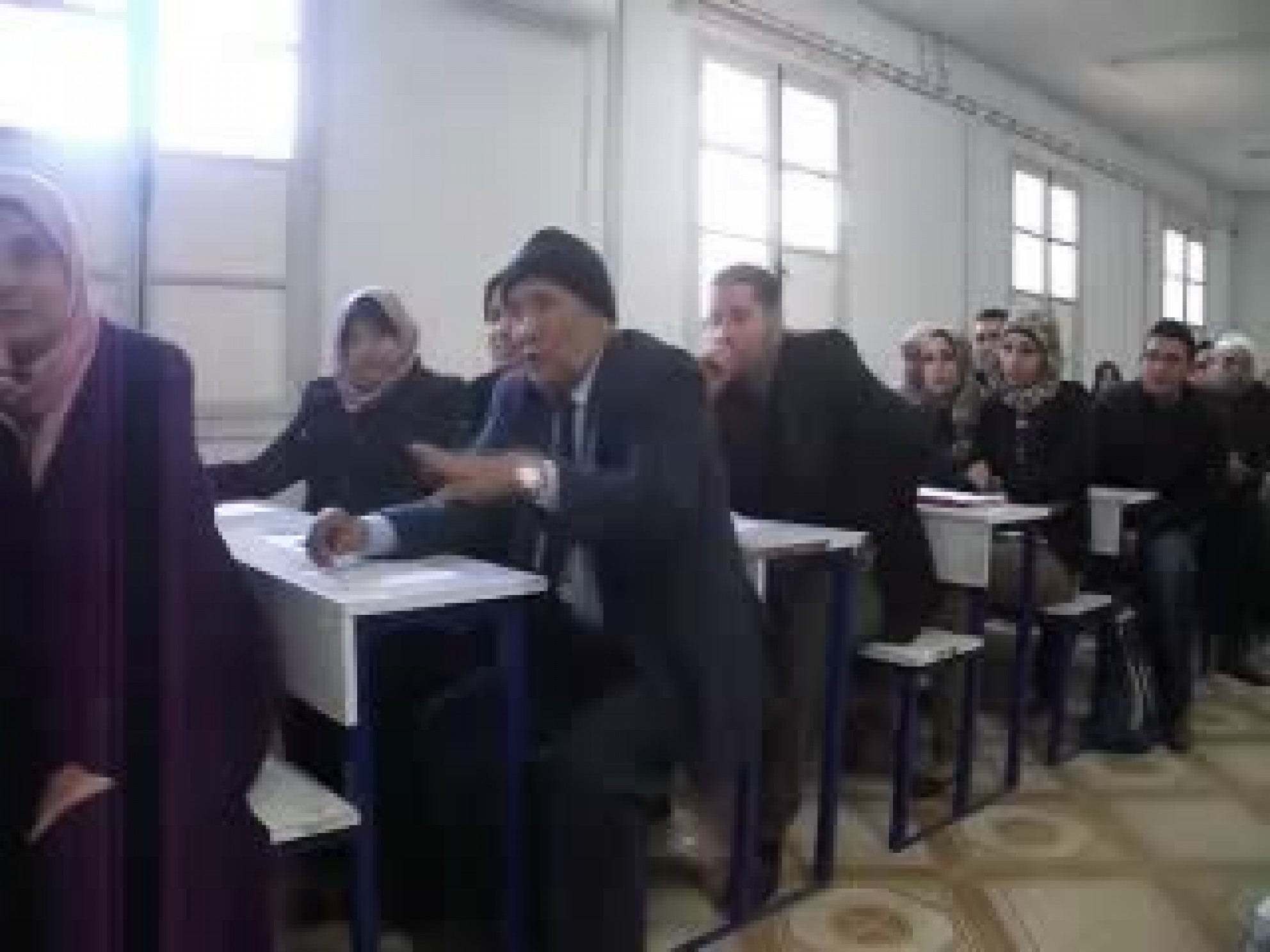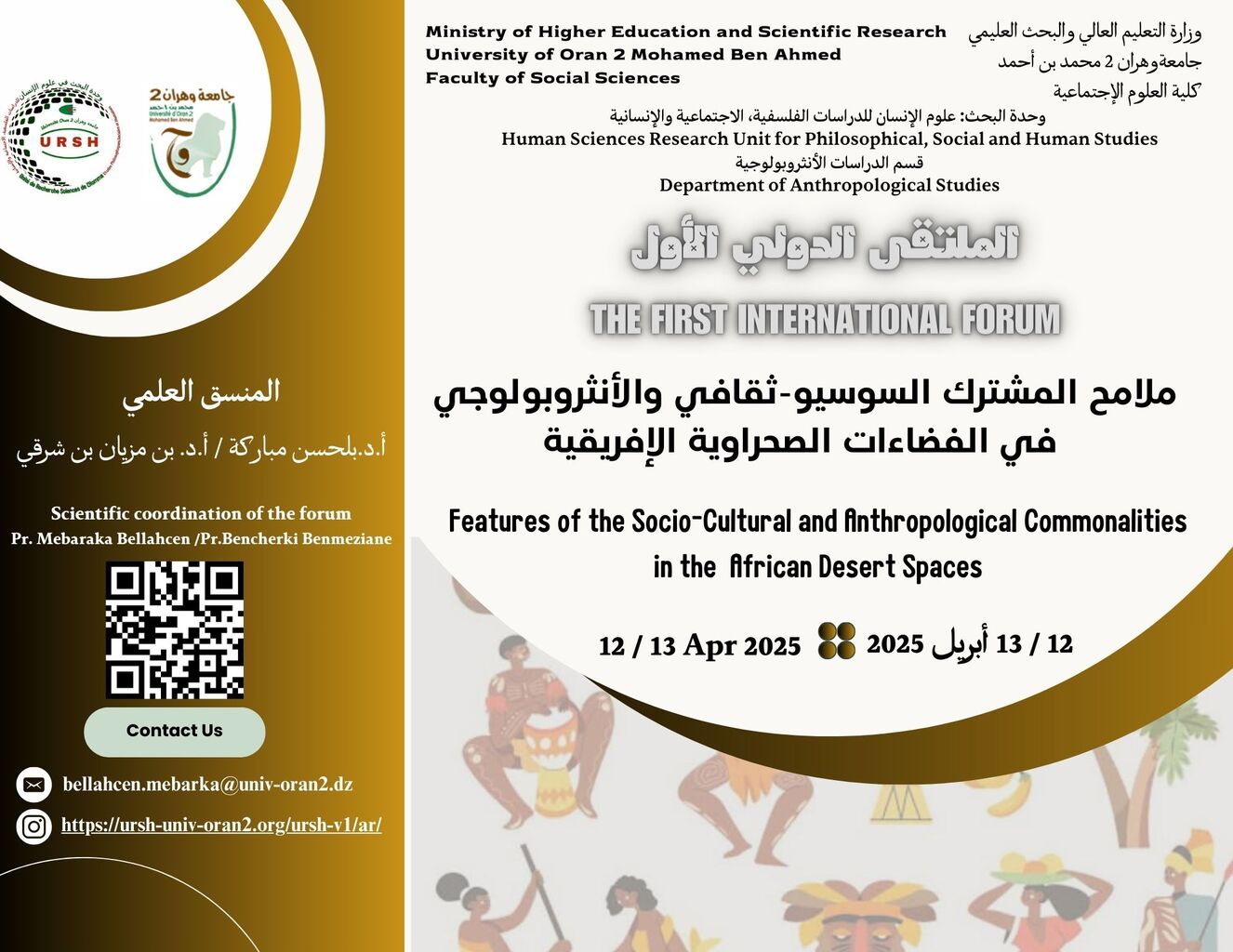
الملتقى الدولي: ملامح المشترك السوسي-ثقافي والأنثروبولوجي
الديباجة:
تشكل الجزائر تنوعا ثريا من الثقافات وموروثات إنسانية غنية ومتنوعة الأبعاد حيث يبرز فيها البعدين: المتوسطي والأفريقاني مستفيدا مما هو محلي ويستفيد منه المحلي في تماهي لصورة ما هو متسام. كما أن سر قوة الثقافة الجزائرية بما فيها الثقافة الشعبية التي يكمن في تنوعها وثرائها بسبب تعدد مشاربها الثقافية وتشعبها، وقدرة هذه النماذج على الاستمرارية والتجدد دون تأثر جوهرها من جهة وتمسكها بوظائفها وعلاقاتها وتفاعلها مع النماذج الأخرى.
إن مقاربة الموروث الثقافي تضعنا أمام إشكالية فعالية الدراسات الأنثرو-تاريخية، كما أنها تطرح علينا مسألة قدرتنا على تتبع خيط سيرورة هذا التراث في امتداد تاريخه. مع العلم أن بعض الجوانب قد تسقط بسبب عوامل الجغرافية وفعالية تقنيات الحفظ والنقل من جيل لآخر، كما يظهر ما هو جزئي من موروث ثقافي لحضارات ومجموعات قديمة هو الكل الذي يمكن أن نبني على أساسه بنية أو نسق ثقافي متكامل لشرح وفحص التراث الثقافي لجماعة معينة (كلود ليفي ستراوس).
تفيد هذه العلاقات المتداخلة وإن تمثلت في صورة الواحد المتعدد في ضرورة البحث عما هو مشترك لاستحالة فهم التراث الثقافي الجزائري، وفهم أي تراث لبلداننا، بمعزل عن الثقافة الإفريقية عموما. ونحسب أن بلدان الساحل الإفريقي هي، في الواقع، البوابة الرئيسة التي تربط الموروث الثقافي الجزائري أو الجزائرية l’Algérianité كانتماء بالأفريقانية كهوية ثقافية أشمل وأوسع وكانتماء لثقافة مركزية تشمل العديد من الثقافات الفرعية التي تضمن لأفرادها تشبعا نفسيا، ثقافيا وروحيا. إن البعد الإفريقي في الموروث الثقافي الجزائري يمكن أن نقاربه ونفهمه عبر دول الجوار وأهمية هذه البلدان في صهر وبناء البعد الإفريقاني وتشكيل قاعدة هوياتية متينة. ونخص بالذكر هنا بلدان الساحل الإفريقي.
إن الموروث الثقافي المشترك بين الجزائر وبلدان الساحل الإفريقي يبدو بأنه نتيجة حتمية لعدة عوامل منها: استقرار القبائل بالصحراء الإفريقية الكبرى، التي تتقاسم الجزائر جزء منها مع هذه البلدان، بالإضافة إلى الحاجة النفسية والروحية التي فرضتهما طبيعة هذه البيئة مما جعل تلك المنطقة تعرف نشاطا ثقافيا وتجاريا وعلميا غير مسبوق في القرون السابقة قبل أن تبدأ عملية التجارة في تلك المنطقة بالتراجع نهاية القرن الثامن عشر وبداية القرن التاسع عشر، ودخول الأسواق الأوروبية ومحاولة تغييرها لطريق القوافل التجارية وأنواع السلع المتداولة في السوق آنذاك.
لتحديد هذا المشترك للموروث الثقافي علينا أن نبحث أولا: في معرفة التركيبة السوسيو-ثقافية للمجموعات التي استقرت بتلك المناطق، أي جنوب الجزائر وبلدان الساحل الإفريقي. وثانيا في طبيعة العلاقات بين هذه القبائل وميكانيزماتها الأساسية (مع التركيز على العلاقات الاقتصادية المتداخلة، تجارة القوافل).وهو ما تحدده المحاور المقترحة.
المحاور :
1 – التركيبة البشرية وأنماط انتشارها في الفضاء الصحراوي.
2 – التنظيمات الاجتماعية واستراتيجيات البقاء والسيطرة على الفضاء.
3 – نماذج تقنيات الكسب والإنتاج كأداة للتكيف والعيش المشترك.
4 –أشكال عمليات التدوين وأنماط التفكير الجماعي.
5 – القوافل التجارية والأسواق كآلية للكسب والانتشار الثقافي.
6 – الطرق الصوفية كممارسة دينية وروحية وارتباطها بنمط عيش السكان وتقاليدهم.
7 – الأبعاد الافريقية والرمزية للتراث المادي واللامادي.
شروط المشاركة:
أن لا يكون البحث قد قدم في ملتقى علمي سابق أو نشر في أية مجلة علمية أو غيرها.
أن يكون البحث متضمنا في أحد محاور الملتقى.
أن يتقيد البحث بالشروط العلمية والمنهجية للبحث العلمي.
أن لا تقل عدد صفحات البحث عن 15 صفحة، ولا تزيد عن 20 صفحة، بالهوامش والمراجع والملاحق.
احترام الآجال المحددة لإرسال الملخصات والبحوث.
أن تراعى في كتابة البحث المعايير التالية:
نوع الخط Arabic Transparent مقاس 14للمتن، وللهامش مقاس 12بالنسبة للغة العربية
وباللغة الأجنبية نوع الخط New RomanTimes مقاس 14 للمتن و10 للهامش.
الهوامش ترقم آليا وتكون في آخر البحث.
لا تقبل إلا المشاركات الفردية.
من الضرورة إرفاق السيرة الذاتية المختصرة مع ملخص المداخلة وترسل على البريد الإلكتروني التالي :
للمشاركة ملآ الاستمارة
https://forms.gle/8X1ZZSDHeUniKT8XA
ترسل الإستمارة إلى البريد الالكتروني التالي:
⇓
Cette adresse e-mail est protégée contre les robots spammeurs. Vous devez activer le JavaScript pour la visualiser.
مواعيد مهمة
آخر أجل للملخصات : 2024/04/30
إرسال رد اللجنة العلمية للملتقى :2024/05/15
آخر أجل لإرسال المداخلة كاملة:2024/06/30
الردود النهائية بالقبول للمشاركة :2024/07/30
The First International Forum:
Features of the Socio-Cultural and Anthropological Commonalities in the African Desert Spaces
12 / 13Apr 2025
Preamble:
Algeria constitutes a rich diversity of cultures and rich and diverse human legacies, where the two dimensions emerge: the Mediterranean and the Afrikaans, benefiting from what is local and benefiting from the local in identification with the image of what is transcendent. The secret of the strength of Algerian culture, including popular culture, lies in its diversity and richness due to the multiplicity and complexity of its cultural aspects, and the ability of these models to continue and renew without affecting their essence on the one hand and their adherence to their functions, relations and interaction with other models.
The approach to cultural heritage presents us with the problem of the effectiveness of anthropological studies, and it also raises the question of our ability to trace the thread of the process of this heritage throughout its history. Knowing that some aspects may fall due to geographical factors and the effectiveness of conservation techniques and transmission from one generation to another, as shown by the partial cultural heritage of ancient civilizations and groups is the whole on which we can build an integrated cultural structure or system to explain and examine the cultural heritage of a particular group (Cloudlevi Strauss).
These interrelationships, even if they are represented in the form of the one and the multiple, indicate the need to search for what is common because it is impossible to understand the Algerian cultural heritage, and to understand any heritage of our countries, apart from African culture in general. We believe that the countries of the African Sahel are, in fact, the main gateway linking the Algerian cultural heritage l'Algérianité as belonging to Afrikaans as a broader and broader cultural identity and as belonging to a central culture that includes many subcultures that guarantee their members psychological, cultural, and spiritual saturation.
The common cultural heritage between Algeria and the countries of the African Sahel seems to be the inevitable result of several factors, including: the settlement of the tribes in the Sahara desert, part of which Algeria shares with these countries, in addition to the psychological and spiritual need imposed by the nature of this environment, which made that region know an unprecedented cultural, commercial and scientific activity in previous centuries before the trade process in that region began to decline at the end of the eighteenth century and the beginning of the nineteenth century, and the entry and attempt to change European markets.In order to determine this commonality of cultural heritage, we must first examine the socio-cultural composition of the groups that settled in these regions, namely southern Algeria and the countries of the African Sahel. Second, the nature of relations between these tribes and their basic mechanisms (with emphasis on inter-economic relations, caravan trade), which is determined by the proposed axes.
Axes:
1 – Human composition and patterns of spread in the desert space
2 – Social organizations and strategies for survival and control of space
3 – Models of earning and production techniques as a tool for adaptation and coexistence
4 – Forms of blogging and patterns of collective thinking
5 – Commercial caravans and markets as a mechanism for gain and cultural spread
6 – Sufi orders as a religious and spiritual practice and their link to the lifestyle and traditions of the population
7 – African and symbolic dimensions of tangible and intangible heritage
